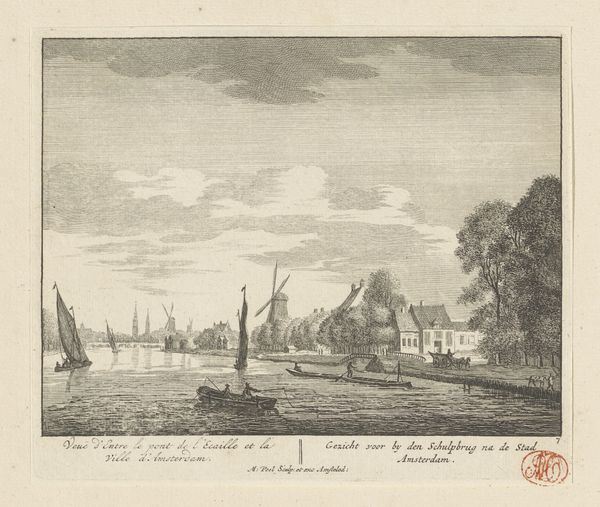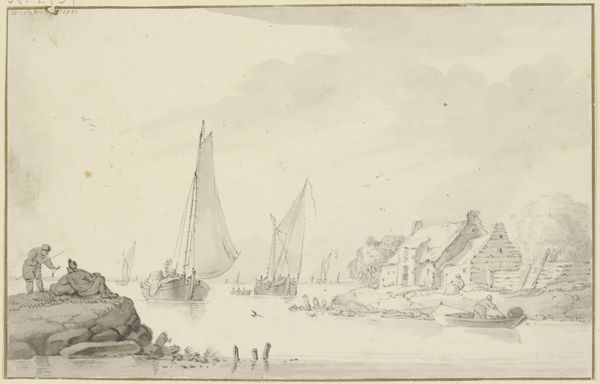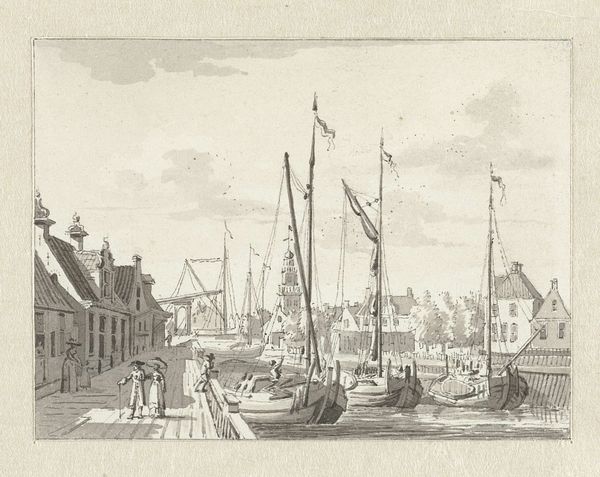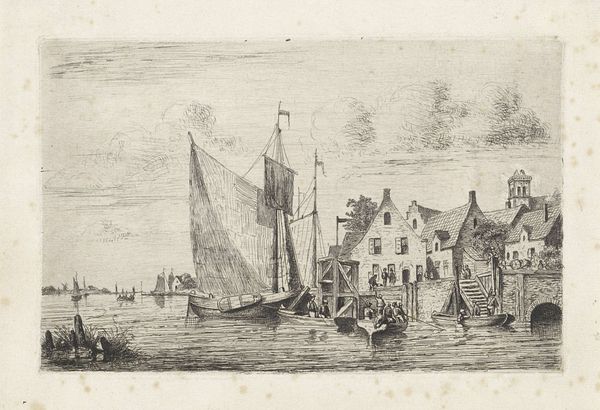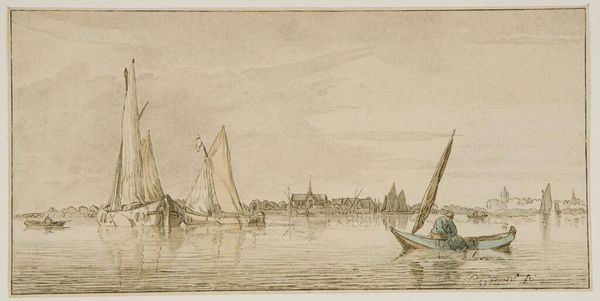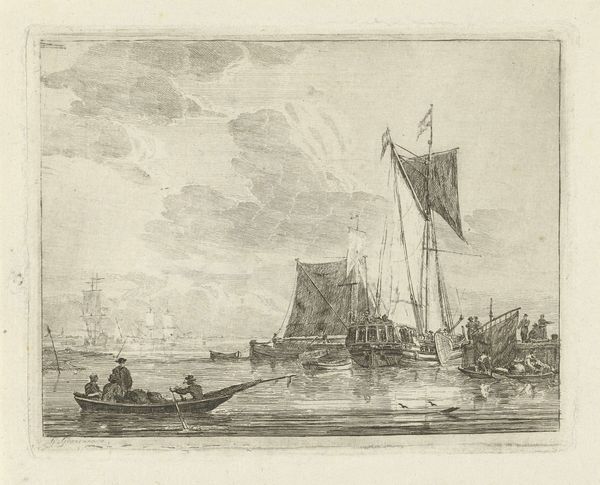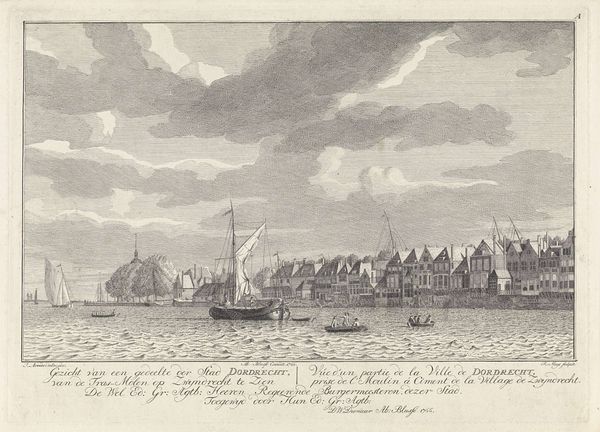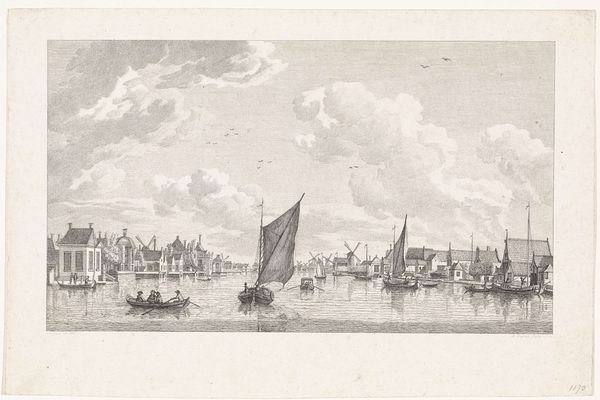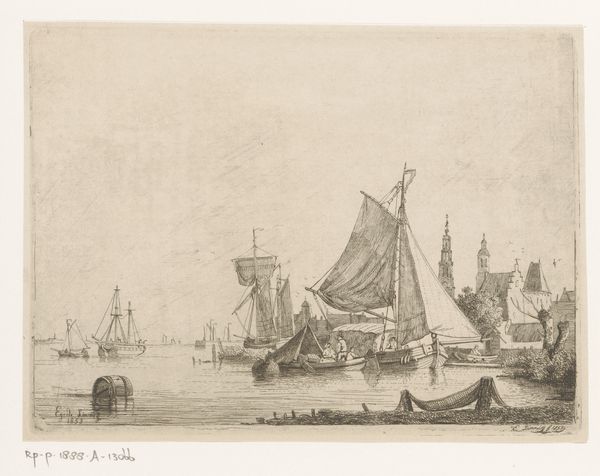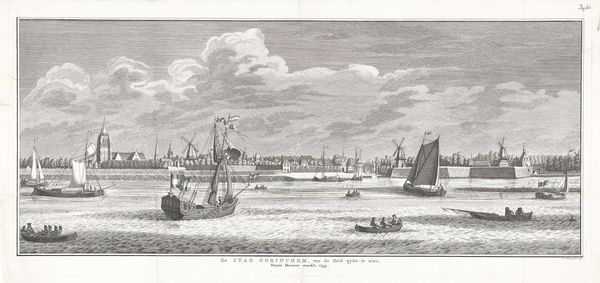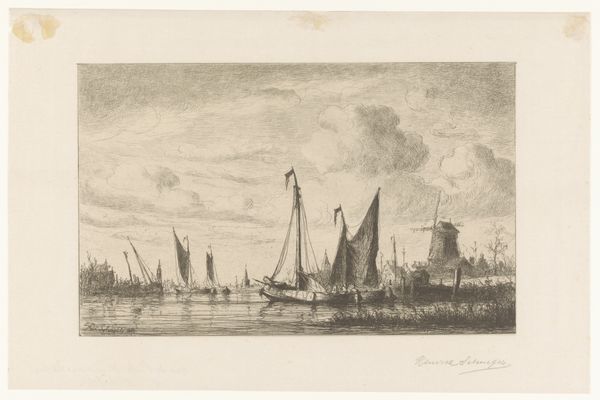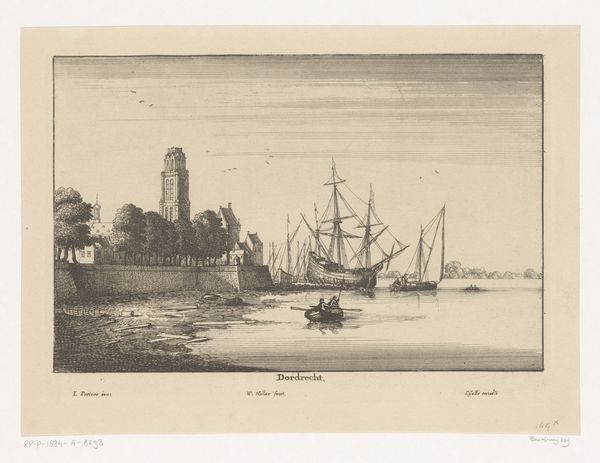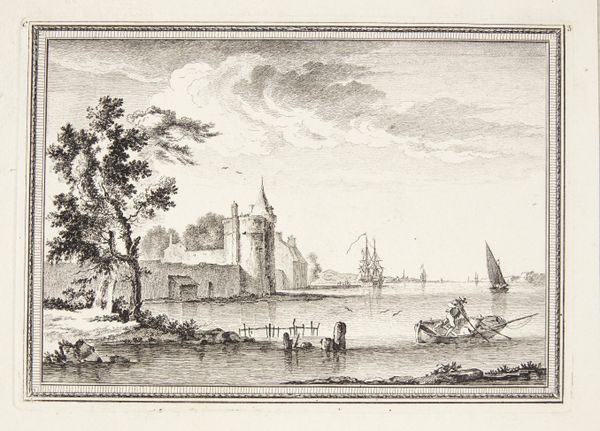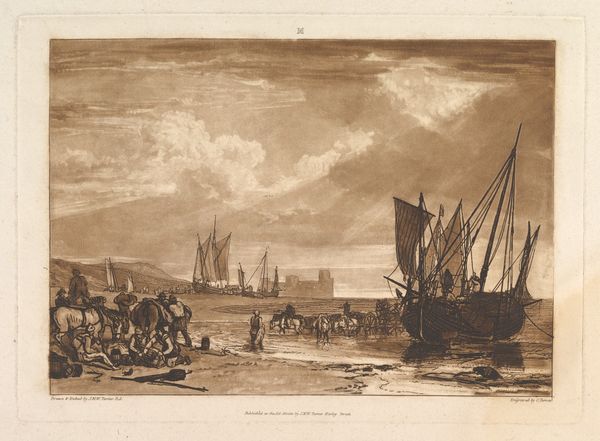
drawing, print, etching, engraving
#
drawing
#
boat
#
baroque
#
dutch-golden-age
# print
#
etching
#
landscape
#
river
#
cityscape
#
engraving
Dimensions: Sheet: 5 11/16 × 8 9/16 in. (14.5 × 21.8 cm)
Copyright: Public Domain
Curator: Wenceslaus Hollar created this detailed cityscape titled "Willebroeck bey Boom" in 1651. He captured this scene through etching and engraving. Editor: My initial impression is one of tranquility, even peace. The meticulous detail gives it a certain vibrancy, despite the monochromatic palette. There's an interesting tension between the busyness of the boats and the still water. Curator: Hollar's works often document specific locations and served as records of his time. The detailed depiction here offers us a glimpse into 17th-century river life and the built environment during the Dutch Golden Age. It also raises a few questions about economic activities. Editor: Absolutely. You see the boats, the buildings, and immediately want to know what products they carried, who worked where. Beyond just depicting a location, art can really ground us and show us the connections between land, labor, and community. Even down to the fashion, everything indicates what class they were. It could all be seen as another power dynamic. Curator: Precisely. The details of attire and the presence of various social strata point to a clear hierarchy. Also, considering that prints were reproducible and often disseminated widely, we must consider their potential role in shaping perceptions of these locations for those who would likely never see them otherwise. What were they trying to portray? Editor: It begs the question: Who was this piece made for? For what purpose was it distributed, and what values did the artist and their patrons aim to promote through its distribution? The cityscape seems so picturesque. Curator: Perhaps that's a hint to answer your questions. These detailed landscapes may have played a crucial role in constructing national identity. They could have served to reinforce pride in their cities. Editor: A celebration of what a nation and a city can be—versus what its actual inhabitants lived like day-to-day. It really challenges us to think about whose stories get amplified in visual culture and who remains unseen. Curator: That is something I will definitely consider the next time I view a cityscape. Editor: Me too, thank you!
Comments
No comments
Be the first to comment and join the conversation on the ultimate creative platform.
